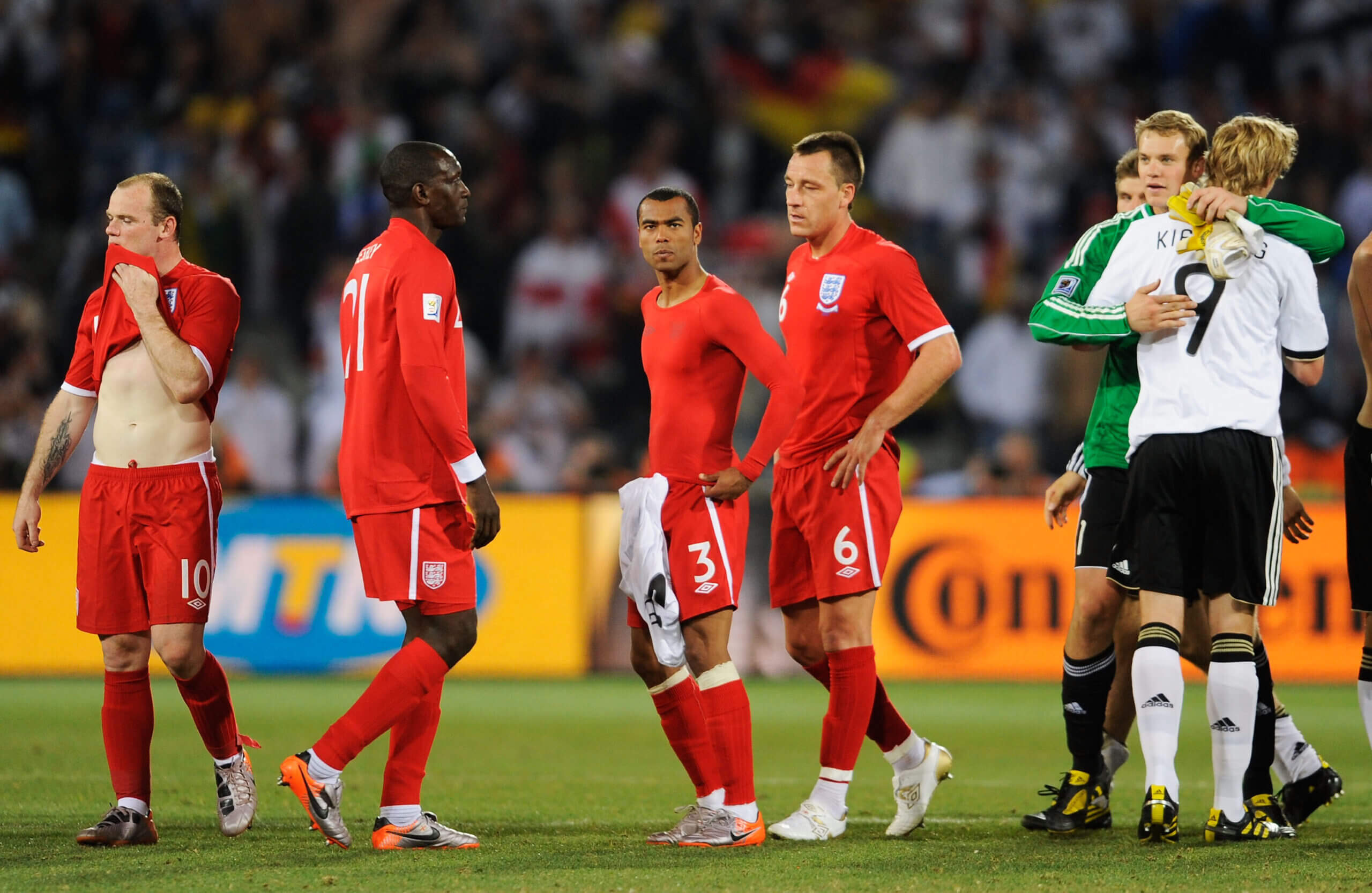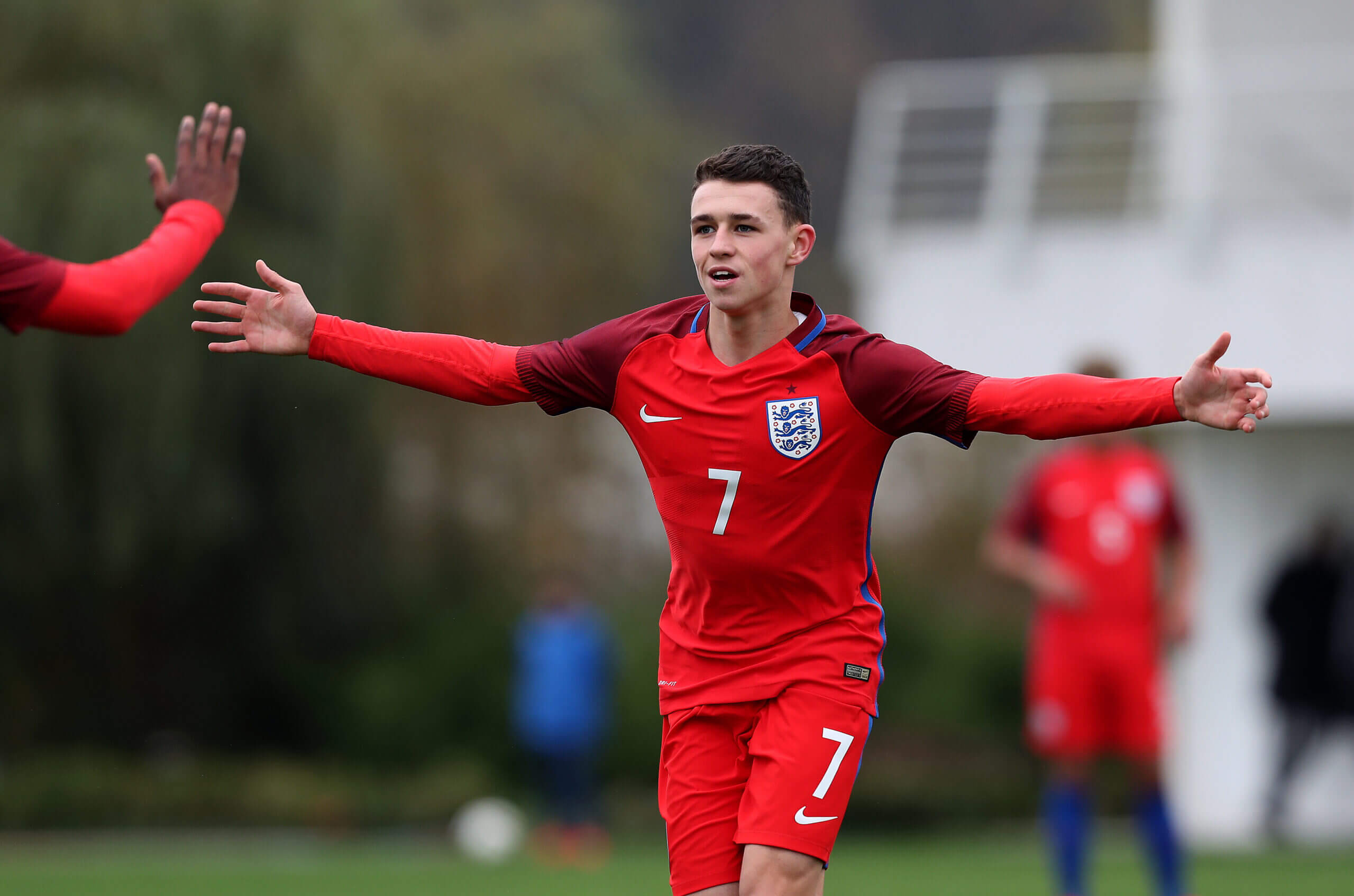Fourteen years ago, English football underwent some significant changes.
Germany dumped England out of the 2010 World Cup, with a 4-1 win in the round of 16. In response, the FA introduced the “homegrown” player rule: at least eight players of a 25-man squad had to be developed by that club, which was defined as spending a minimum of three years between the ages of 15 and 21 in their youth teams.
The following year, the FA released the Elite Player Performance Plan (EPPP), detailing the restructuring of academies in a blueprint to develop “more and better” homegrown players.
This was fighting fires. The number of minutes given to under-21 players was crashing — from almost 92,000 in 2006-07 to 53,630 in 2010-11. Young English players were finding the academy-to-first-team pathway closed. Clubs were getting richer and most opted to buy the finished article instead of developing their own. It was faster, easier, and meant more immediate success.
The FA’s intended solutions did not fix things immediately. In 2015, the FA’s chairman at the time, Greg Dyke, wrote in UK newspaper The Guardian, using data to highlight how little opportunity young English talent was still getting in the Premier League and Champions League. His public ambition of England winning the 2022 World Cup looked to be over, years in advance of the tournament.
Dyke, wanting to up the homegrown quota to 12 players, cited Harry Kane, who had just come off the back of his breakout season at Tottenham Hotspur, scoring 21 league goals in 2014-15. In many ways, Kane should be the poster boy for the route from academy to senior level. He had four loan spells from Spurs across the top three English tiers, having been released by Arsenal before his teenage years, as he “wasn’t very athletic” and “a bit chubby”.
English football was hyper-focused on physicality and linear development. Along with Kane, Declan Rice, Eddie Nketiah, Eberechi Eze, Tyrone Mings and Ben White — all have made senior England appearances and played over 100 Premier League games — were released in their academy years for being too small or too weak.

England’s 2010 World Cup exit was the catalyst for a major structural rethink from the FA (Michael Regan/Getty Images)
Clubs have to make best-case predictive judgements with these kids and inevitably will overlook some future talents, but the English academy system had an unhealthy and counterproductive obsession with physically mature players. The joke, half-serious, is that Lionel Messi, arguably the greatest footballer ever but only 5ft 7in (170cm) tall, would have never made it through an English academy.
Why then, in five of the past six seasons, have the number of minutes given to under-21s risen? In 2023-24, that age-group played almost 85,000 Premier League minutes; the most by youngsters since 2006-07.
This comes at a time when the Premier League is worth over three times what it was in 2010, yet academies have never been more important. The four reasons are interlinked, even with first-team climates at unprecedented levels of volatility, given how often head coaches are sacked and players move:
- Academy players are better than they were a decade ago
- Condensed game schedules and higher match intensity have led to an increase in injuries
- The impact of PSR (profit and sustainability rules) on transfers
- A post-Brexit impact on transfers in the British game
England’s national football identity, before 2011, was still mired in residual thinking from the Charles Hughes era in the final years of the previous century. Back then, direct, long-ball football was preferred. So bigger, physical players who could win duels and attack/defend crosses were needed.
But improvements in coaching and facilities, the introduction of performance analysis, sports science and mentoring brought the focus towards holistic player development. That was proved in 2017, as England sides won World Cups in the under-17 and under-20 age groups, along with the Under-19 European Championship.
Historically, late-developing players would be released earlier and not given time to flourish. Mikha Gabechava, a scout at Belgian top-flight club Gent, explains that biases are “even worse at youth level. We are naturally drawn to early developers due to their better physical development, which allows them to stand out and have a greater impact. As of now, I haven’t found a total cure”.
There are partial cures, though.
Take Bernardo Silva of Manchester City and Portugal’s national team, and one of the most technically complete and tactically versatile players in the Premier League. He was excellent in his early academy days at Benfica but lagged behind physically as a teenager and is only 5ft 8in now, at age 30. “It’s our obligation to have a good environment to develop that kind of talented player,” Rodrigo Magalhaes, Benfica’s academy technical director, told The Athletic last year.

Bernardo Silva with Benfica in 2014 (Michael Regan/Getty Images)
Benfica play their age groups ‘up’ one year, against older sides, ensuring they face more technical opponents and, more likely, physically stronger players. This reduces the benefit of physical advantages and demands that young footballers improve technically.
Similarly, in Belgium they created ‘Futures’ teams entirely made up of late (physical) developers, which run parallel to their age-group squads. As such a small nation, Belgium cannot afford to constrict their talent pool; Yannick Carrasco and Dries Mertens are notable graduates of the ‘Futures’ plan.
For England, the clearest example is Bernardo’s City team-mate, Phil Foden. A May-born, City academy graduate, who was never the biggest but technically fantastic — a combination which, two decades ago, might not have been enough.
“We have to grow and change”, were Gareth Southgate’s words in 2011, upon the EPPP being launched. Then the FA’s head of elite development and later manager of the under-21 (2013-16) and senior (2016-24) sides, Southgate also said, “we can’t keep playing the way we have and producing the ‘English’ style of player”.
Foden could not be further from the typical “English style of player”, a flourishing No 10 at City under Pep Guardiola. He has matched or increased his goals plus assists tally in each of the last five Premier League seasons.
While Foden never needed it, the concept of biobanding was introduced for players like him. This is where players are grouped based on physical maturity rather than their dates of birth, to ensure late developers are not missed.
It is research-led talent development. Academics find no consistent evidence for physical predictors and future career prospects. Only from under-21s level can international experience be treated as a genuine (significant) predictor of reaching the highest levels.
Six of the 12 players aged 25 or younger in the England squad that got to the final of Euro 2024 this summer — Foden included — were third- or fourth-quartile babies, born between March and August. Split the UK’s September-August academic year into four three-month chunks, and English academies typically have an over-representation of those born between September and November.
There are exceptions (Jude Bellingham, with a June birthday, is in advance of his years in every sense of the phrase) but it is a general rule. Those born earlier tend to mature first.

Foden celebrates scoring for England Under-17s in 2016 (Ronny Hartmann/Getty Images)
If bringing through academy players is typically about timing, the rising intensity of matches, the homogeneity of the pressing game and increased injuries have necessitated fast-tracking sometimes. Examples from last season include Newcastle United’s Lewis Miley, Jack Hinshelwood at Brighton & Hove Albion and Manchester United’s Kobbie Mainoo — three central midfielders, usually a position for experienced players.
Manager Southgate showed concern about rushing Mainoo’s progression into the senior England side. But he eventually picked him in his Euro 2024 squad, and the 19-year-old started in all four knockout-phase games.
“He’s doing brilliantly for a young player and we’re never slow to put a young player into seniors,” said Southgate before the tournament. “But he’s only had a handful of games and you have to be very careful development-wise in making those decisions at the right time.
“We think, ideally, we should allow him that space to develop at his own speed. He’s not at the point in terms of number of games that Jude (Bellingham) and Bukayo (Saka) were when they came in for the first time.”
Successful teams of recent years, domestically or internationally, achieve that success not just through a strong starting XI, but squad depth. Premier League rules state that under-21 players do not need to be registered, so youngsters can fluidly move between academy teams and their club’s senior side. They play essential first-team supporting roles, either as back-ups or through money-making sales.
“Clubs understand that developing young players is one of the ways to make good profit, which allows them to be more sustainable in the longer term and reinvest to strengthen their first-team squad,” says Gabechava. “Clubs try to push players into the first team as early as possible. This allows them to increase the player’s price — early developers can be quick profit-makers.”
Academies are a key cog in the PSR machine, where clubs are allowed to lose up to £105million ($138m) across three seasons. Academy graduates count as “pure profit” when sold, incentivising clubs to sell their own to buy others.
Newcastle, Manchester United and Chelsea are clear examples this summer, with this approach also underpinning Manchester City’s transfer strategy under Guardiola.
Chelsea won the Champions League in 2021 with a squad featuring four graduates from their academy. It followed on from their UEFA Youth League (effectively an Under-19s Champions League) successes in the 2010s, reaching the final four times and winning it twice. Just three years on from beating Manchester City in European football’s biggest game, the only member of that 2021 quartet still at the club is Reece James.
Post-Brexit transfer regulations have further complicated things.
Firstly, the UK leaving the European Union led to a points-based visa-style system when buying players from abroad, requiring work-around loan moves for some to go through and making other deals difficult or impossible. Secondly, they prevented the signings of under-18s from abroad, adding pressure on academies to ensure they find local talent (and before their domestic rivals) and develop players better and faster. It has catalysed an arms race of clubs picking up talent at younger ages. Officially, players join from under-nines, but pre-academies do exist as low as under-fives.

Chelsea’s academy played a big part in their 2021 Champions League win (Darren Walsh/Chelsea FC via Getty Images)
While it is a correlation and not necessarily causation, the record-breaking number of goals in the Premier League last season might be explained by the number of minutes played by youngsters, especially in defensive positions. Less experienced and unrefined players will inevitably make more mistakes, and now it’s happening on the Premier League stage rather than while out on loan at lower levels of the game.
Liverpool centre-back Jarell Quansah explained the benefit of his loan at Bristol Rovers, in League One (English football’s third tier), to The Athletic for the second half of the 2022-23 season. Speaking of making his Rovers debut at age 19 in a 5-1 loss against Morecambe, Quansah said: “I learned more in those 90 minutes than in the previous couple of years. It was a real eye-opener.
“We had a young back four. A lot of teams would go direct against us, thinking they could bully us. There were times when I thought, ‘I’m miles off it’. In academy football, I was comfortable, never really challenged physically, chilling and cruising through games.”
English academy football might have overcorrected itself. The matches for those youth sides are often on pristine pitches, in front of small (and studious) crowds, with most teams playing out from the back and trying to high press.
Gabechava says that “clubs bridge the gap between academy and first-team by developing an identity: style of play, game principles, culture. That way, the transition should become smoother, as players need to adapt to the intensity and physicality of the competition, rather than to new tactical aspects”.
It makes sense, but research, plus culture and biology, explain why the transition is always hard. Despite there being hundreds of thousands of published studies on football topics, only a handful exist that directly compare academy teams and senior sides, in terms of play style.

Jarell Quansah on loan at Bristol Rovers in 2023 (Dan Mullan/Getty Images)
Existing research shows academy and senior football as being very different. Academy teams have more open defences, successful attacks at that level tend to be from shorter sequences, with fewer passes, more dribbles and counter-attacks happening more often. A higher proportion of shots are converted in academy games, while younger players scan less than senior ones.
Academy players might typically be early physical developers, but the brain develops more slowly. Plenty simply do not have the information recognition or processing to play like senior players.
In the pressure-cooker of academy systems — it’s essentially a fight for senior contracts — players would be forgiven for opting to dribble and try to score themselves rather than passing. Ultimately, if academy teams defend poorly, individually and collectively, then players will always dribble over passing, and more goals will be scored.
The past seven seasons have seen six English teams in the Champions League final, three English winners and two all-English finals. It’s further evidence of the improved level of academy players and their growing importance.
It might be time for the FA to review the 13 EPPP years and replan. This year is the fourth in a row where England has been without a team in the UEFA Youth League’s final four.
That is far from a disaster — what trophies and success at youth level mean is complex — though there is no excuse, with its infrastructure, finances and an unmatched footballing pyramid, for England’s academy system to ever lag behind again.
It’s 2024: the era of the academy graduate.
(Top photo: Justin Setterfield/Getty Images)





